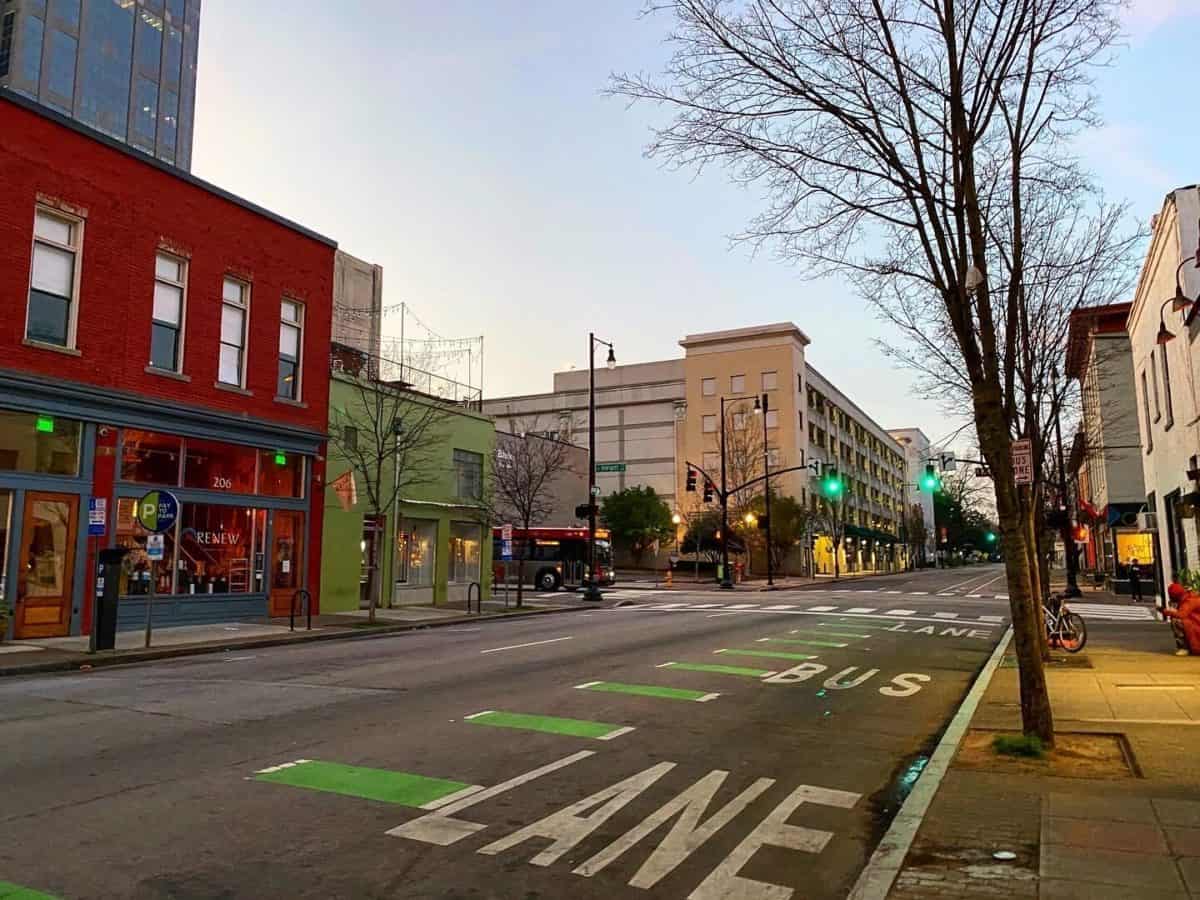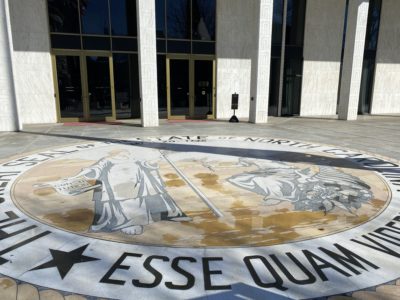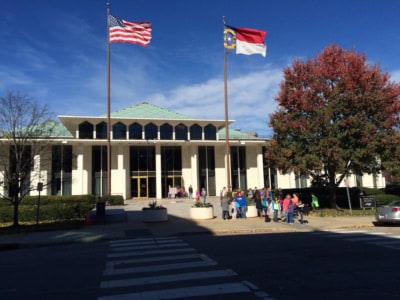
The iconic images that photographer Walker Evans published of men, women, and children with sad eyes and sapped spirits documented the human toll of the Great Depression. The TV footage of poor black people, unable to avoid the floodwater that covered New Orleans after Hurricane Katrina, rescued from their rooftops made vivid the reality of persistent poverty.
Now, the multi-layered story of the virus pandemic is emerging not only in data and written journalism, but also in photographs and videos. Searing pictures from inside burdened hospitals. Doleful photos of major-city streets without pedestrians or automobiles. Aerial shots of parking lots full of cars awaiting food distribution.
In North Carolina, uplifting videos have told of principals and teachers driving out to greet students in their homes, including the EdNC video of West Craven High School principal Tabari Wallace that went viral across the nation. Pictures have called attention to the digital divide — more than 190,000 households with students without internet access — by showing automobiles parked outside of schools for students to do their homework at Wi-Fi hot spots.
So far, the COVID-19 outbreak has widened existing social, economic, educational, health, race, and ethnic divides. The post-pandemic picture of the state and nation hangs on the response to the crisis by political leaders and by the citizen electorate. Will the pandemic propel a centripetal force that restores a strong societal center or a centrifugal force that further pulls people apart?
While many middle-class and affluent professionals have continued working at home, many blue-collar and lower-paid workers have either lost jobs or continued to work as supermarket clerks, nurses’ aides, janitors, and meat-packers. North Carolina crossed a marker of economic distress this week when it reached one million applications for unemployment insurance.
Economic trend-lines show an interlocked, up-and-down relationship between jobs and poverty. In periods of job growth, poverty rates decline. When recessions hit and jobs decline, poverty rates rise. The steep fall-off in jobs has implications for public schools in North Carolina, where more than half of students now qualify for free and reduced-price lunch, meaning they live in poor or near-poor households.
The Kenan Institute of Private Enterprise at UNC-Chapel Hill distributed this week a commentary on the pandemic’s “especially traumatic’’ effect on working poor African Americans. The Kenan paper says that 70% of low-wage workers, many now deemed essential, have no paid sick leave or the option to take unpaid leave.
“A host of African American civil servants — police, firefighters and other emergency personnel, as well as public school teachers — are concentrated in full-time jobs that do not pay them enough to cover basic needs,” says the commentary. “… Many moonlighted in part-time jobs that disappeared in the pandemic-induced business shutdowns, leaving them without a financial safety net to weather the crisis.”
The Kenan commentary, issued by Professor Jim Johnson and four colleagues, calls on Congress to activate the Southeast Crescent Regional Commission as an instrument for recovery and redevelopment in the “Black Belt’’ communities of North Carolina and neighboring states.
Stanford University historian Walter Scheidel, who has studied the effect of wars and plagues on inequality, points to the political dynamics and the policy choices made in response to “severe shocks’’ as crucial to determining whether divisions are narrowed or widened. Scheidel recently published a commentary in The New York Times and spoke at length to vox.com.
“The most important lesson of history endures,” says Scheidel. “The impact of any pandemic goes well beyond lives lost and commerce curtailed. Today, America faces a fundamental choice between defending the status quo and embracing progressive change.”
Out of the Great Depression of the 1930s came Social Security, stock market regulations, and support for rural communities, including the federal tobacco program. In the aftermath of World War II, government provided incentives for college-going, suburban home ownership, and scientific research.
Out of the Great Recession of 2008-09 came a decade of slow recovery accompanied by divisions in several dimensions: hyper-partisanship, a bifurcated economy with expansion in both low-wage and high-wage jobs, fast-growing metro areas, and declining rural communities. The virus pandemic arrived as North Carolina was called upon to face its educational inequities and to prepare more of its young people for careers that required education beyond high school.
Which way will North Carolina — indeed America — turn? Six months from now, voters will select the elected officials who will determine the fundamental portrait of a state and nation that emerges in 2021 and beyond.
Recommended reading



